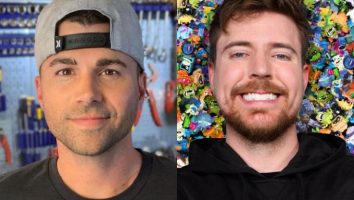Created for the opening credits of the 1964 comedy of the same name, The Pink Panther has proven to be one of the more recognizable animated icons over the last 30 years.
MGM/UA, owner of The Pink Panther franchise, has taken advantage of its long-lasting appeal to establish over 200 worldwide licenses with companies that produce products not only for children, but often exclusively for their parents, the first generation of Pink Panther viewers.
Here’s a brief outline of MGM/UA’s strategy of reintroducing The Pink Panther to a new generation of children:
– In 1964, the crafty – and speechless – Pink Panther debuts in the opening credits of the film of the same name. Over the next two decades, it stars in 140 theatrical shorts that later air on Saturday mornings on NBC, as well as other TV series and film sequels.
– In 1983, MGM/UA syndicates all 176 Pink Panther cartoons.
– The Pink Panther enjoys long-running licensing agreements with many companies, including Ja-Ru Inc. (rack toys), Peter Pan Industries (plastic dinnerware) and Owens-Corning (‘non’ spokespanther for fiberglass insulation).
– Hoping to breathe new life into the wily old cat, MGM/UA decides in 1992 to produce new Pink Panther cartoons with a twist – he will speak. Actor Matt Frewer (‘Max Headroom’) becomes the voice.
– In 1992, MGM/UA meets with its licensees to explain the changes made to the character and arm them with all necessary art work needed to gear up for the launch of the new series in 1993.
– The new weekday, syndicated Pink Panther series debuts in September 1993, with approximately 80 percent clearance in U.S. markets.
– As the show enters its third season in 1995, MGM/UA continues to aggressively seek new licensees. In 1995 alone, 17 new licensees climb aboard, ranging from C&H Toy Company (plush) to Freeze (adult apparel) to Deluxe Corporation (checks) to Wanderlust Interactive (edu-tainment CD-ROM games).
– As the audience catches on to the Pink Panther’s voice, discussions have begun about making a plush toy with a sound chip.





















